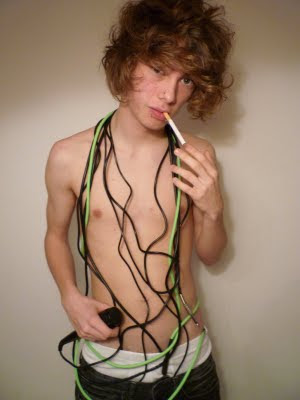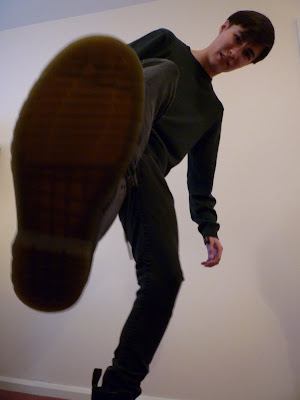




As you can see from my blog I have managed my time well by continually working on my task and uploading my work as I went along. I did this by setting myself a small task each night so that I ended up with all the elements I needed for the production of my final pieces, including research and planning, the construction and evaluation.
On my preliminary task I am happy with the quality of the photos but not with the design. I like the fact I picked out colours from the photo on the front and used them in my contents page (green), which I have done for my main task too, using the colour maroon through out. However, on my preliminary task's front cover and contents page there is far too much negative space that needs to be filled which makes the magazine look as if it has hardly anything inside. In comparison I have included lots of information on the front cover and contents page of my main task which makes it look as if the magazine is packed with information the reader wants to know about.
I originally wanted a plain wall for the background of my front cover as this is what many music and general magazine covers have, however I was not happy with what I was generating using a white background so I decided to use a different idea and used a brick wall for the background, I was extremely pleased with the result and even more satisfied once I had edited the photo.
I have learnt that a medium close up is good for a front cover of a magazine, as it shows nearly all elements of the costume, excluding the shoes, allows the reader to recognise who the person is and it lets you see the facial expression they are pulling. For both tasks on the front cover I had the model in the centre so that I could surround them with information like the magazines below.


After researching different music magazines and seeing that they rarely used props on their front cover I still wanted to try out an idea that I had in my mind, which was to have my model topless with wires (having connotations to the music scene due to guitar and microphone leads). When I had done this I was not overly happy with the results so decided against this idea and would put the model in 'normal' clothes.



If you compare my layouts to my final productions at the top, you can see that I have followed the design, and as I had this guidance in the making of my front cover, contents page and double page spread I found them easier to complete and am now pleased with how they have turned out.
Feedback Throughout Production
When asking for feedback through out the production of my magazine cover I found that many of them said that they did not think the album cover ‘suited’ the rest of the magazine and that the photo needed to be of ‘better quality. I had allowed myself enough time so I could improve this problem and therefore I deleted the album cover and replaced it with a win tickets to see infected symbol. Once I had placed this in the feedback was much more positive and said that it was ‘much better’ and that it now ‘suits the rest of the magazine’.
Also whilst producing my front cover I tried a different design and I asked a peer what they thought of the design and said they thought ‘the original design is better’ and that I ‘should stick with my first idea’. I took this advice and am now extremely pleased with my final product following my initial design.
When producing my contents page I was unsure on the paint splat background so I asked different people with in my class and I had some very positive responses which were:
‘It looks messy, but in a good way, like most magazines have.’
‘I think you should keep it as music is to do with creativeness, which could also be reflected in art’
‘I understand why you might not like it, but it works with the other elements on the page so I think you should keep it’
I took their advice and I am really pleased with the final product.
















































